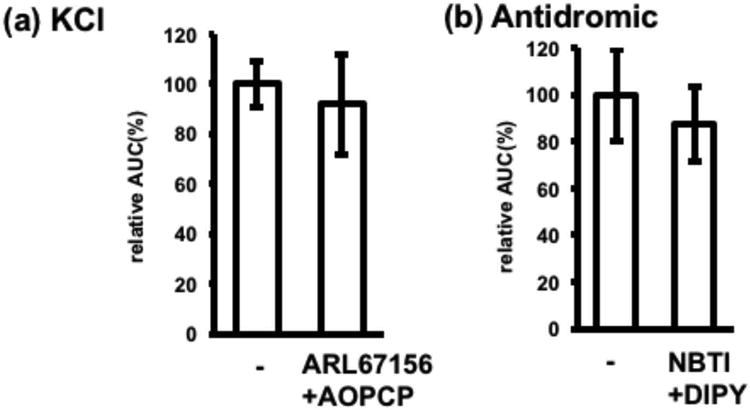Figure 5.

Lack of involvement of ectonucleotidases and equilibrate nucleoside transporter (ENT) in electrically-induced adenosine release. (a) KCl-induced adenosine release in the absence or presence of 100 μM ARL67156 and 100 μM AOPCP (pretreatment; 15 min). As the inhibition of ectonucleotidases may cause extracellular ATP build-up and ATP-induced calcium increase in adenosine sensor cells, a P2 receptor antagonist, 30 μM PPADS, was added to the extracellular solution. Each n= 30 cells from 3 experiments, **p < 0.01, t-test. (b) Adenosine release in response to antidromic stimulation in the absence or presence of 5 μM NBTI and 10 μM DIPY (pretreatment; 30 min). As DIPY has autofluorescence blocking ultraviolet excitation of Fura2AM, Rhod4AM was used. Each n=28–34 cells from 3–4 experiments. **p < 0.01, t-test.
